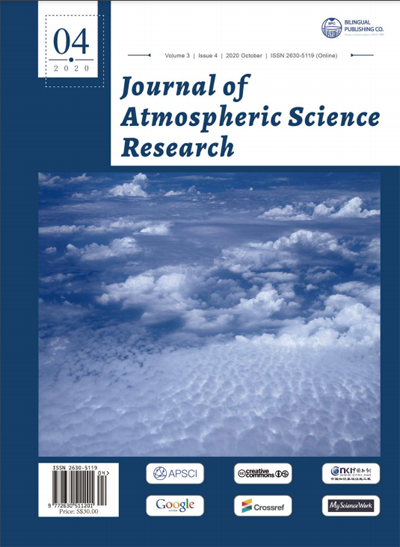-
2081
-
1501
-
1495
-
1366
-
1230
Air Pollution in Kolkata: Emerging Challenges and Dynamics
DOI:
https://doi.org/10.30564/jasr.v3i4.2231Abstract
In 2016 WHO reported that Kolkata is the second most polluted city in India behind Delhi. Albeit the number of registered vehicles in Kolkata is much less compare to Delhi. Kolkata has encountered a decade long battle against change of old vehicles and fuel types. So, this paper made an attempt to explore the dynamics of air pollution in the city specially pre and post period of vehicle and fuel change in the city. The objectives of the paper include looking at spatiotemporal change of air pollution in the city. Besides, the paper additionally illuminates on the role of land use functions and pollution in the city. The analysis shows that after the implementation of regulatory measures air pollution in the city reduced to some extent but effects of the measure gradually diminished. It is found that land use function as well as dynamics of metropolitan area plays crucial role in the air pollution of the city.Keywords:
Air pollution, Regulatory measure, Metropolitan area, Spatial and temporal changeReferences
[1] Greenstone, M., Rema, H. Environmental regulations, air and water pollution and infant mortality in India, NBER Working Paper 17210, 2011.
[2] Ghose, M. R. Paul, Banerjee, K.S. Assessment of the impacts of vehicular emissions on urban air quality and its management in Indian context: the case of Kolkata (calcutta), Environmental Science & Policy, 2004, 7(4).
[3] Ghosh, P., Somanathan, R. Improving Urban Air Quality in India Lessons from the Kolkata Clean Air Regulations of 2009, Working paper, International Growth Centre, London, 2013.
[4] Tolley, G. Cohen, A. Air pollution and urban land use policy, Journal of Environmental Economics and Management, 1976, 2(4).
[5] Weng, Q., Yang, S. Urban air pollution pattern land use and thermal landscape: an examination of linkage using GIS, Environmental Monitoring and Assessment, 2006, 117: 463-489. https://doi.org/10.1007/s10661-006-0888-9
[6] Nichol, J. E. High resolution surface temperature patterns related to urban morphology in a tropical city: A satellite bases study, Journal of applied Meteorology, 1996, 35(1).
[7] Balling, R. C., Brazell, S. W. High resolution surface temperature patterns in a complex urban terrain, Photogrammetric Engineering and Remote sensing, 1988, 54(9).
[8] National Transport Development Policy Committee. India Transport Report, Moving India to 2032, Routledge, New Delhi, 2013.
[9] Kolkata Metropolitan Development Authority. Perspective plan of KMA: 2025, KMDA, Kolkata, 2005.
[10] Swamee, P.K., Tyagi, A. Formation of an Air Pollution Index, Journal of the Air & Waste Management Association, 1999, 49(1): 88-91. DOI: https://doi.org/10.1080/10473289.1999.10463776
[11] Matthews, J.A. Quantitative and Statistical approaches to Geography, Pergamon press, Oxford.
[12] Nath, B, Acharjee, S. Urban Municipal Growth and Landuse Change Monitoring Using High Resolution Satellite Imageries and Secondary Data, Studies in Surveying and Mapping Science, 2013, 1(3).
[13] Munshi, S.K. Calcutta: Land, Land use and land market, chapter in books (Ed) Calcutta’s Urban future: Agonies from the past and prospects from the future, by Dasgupta, B, Bhattacharya, M. Basu, D. K. Chatterjee, M. and Banerjee, T. K. Government of West Bengal, 1991.
[14] Roy Chowdhury, A. Citizen’s report: Air quality and mobility in Kolkata, Centre for Science and Environment, New Delhi, 2011.
[15] Roy Chowdhury, A. Citizen’s report: Air quality and mobility in Kolkata, Centre for Science and Environment, New Delhi, 2011.
[16] Gwilliam, K. Kojima, M. and Johnson, T. (2004) Reducing Air Pollution from Urban Transport, the World Bank, Washington DC
[17] Berry, B. J.L., Kasarda, J.D. Contemporary urban ecology, Macmillan, New York, 1977.
[18] Shaw, A. Inner-city and outer-city neighbourhood in Kolkata: Their changing dynamics Post liberalization, Environment and Urbanization Asia, 2015, 6(2): 139-153
[19] Frank, L.D., Sallis, J.F., Conway, T.L. Chapman, J.E., Saelens, B.E. Bachman, W. Many pathways from land use to health: Associations between neighborhood walkability and active transportation, body mass index, and air quality. Journal of American Planning Association, 2006, 72: 75-87.
[20] Marquez, L., Smith, N. A framework for linking urban form and air quality, Environmental Modeling and Software, 1999, 14(6): 541-548. https://doi.org/10.1016/S1364-8152(99)00018-3
[21] McCarty, J., Kaza, N. Urban form and air quality in the United States. Landscape and Urban Planning, 2015, 139: 168-179.
[22] Stone, B., Jr. Urban sprawl and air quality in large US cities, Journal of Environment Management, 2008, 86(4): 688-698.
[23] Schweitzer, L., Zhou, J. Neighborhood air quality, respiratory health, and vulnerable populations in compact and sprawled regions, Journal of American Planning Association, 2010, 76: 363-371
[24] Mansfield, T.J., Rodriguez, D.A., Huegy, J., Gibson, J.M. The effects of urban form on ambient air pollution and public health risk: A case study in Raleigh, North Carolina. Risk Anal, 2015, 35: 901-918
[25] Bechle, M.J., Millet, D.B., Marshall, J.D. Effects of income and urban form on urban NO2: Global evidence from satellites, Environmental Science Technology, 2011, 45(11): 4914-4919
[26] Borrego, C., Martins, H. Tchepel, O. Salmim, L. Monteiro, A., Miranda, A.I. How urban structure can affect city sustainability from an air quality perspective. Environmental Modeling and Software, 2006, 21: 461-467
[27] Wang, S., Fang, C., Wang, Y. Spatiotemporal variations of energy-related CO2 emissions in China and its influencing factors: An empirical analysis based on provincial panel data. Renewable Sustainable Energy Reviews, 2016, 55: 505-515.
[28] Roy Chowdhury, A. Citizen’s report: Air quality and mobility in Kolkata, Centre for Science and Environment, New Delhi, 2011.
[29] International Institute for Applied Systems Analysis and Council on Energy Environment and Water. Pathways to Achieve National Ambient Air Quality Standards (NAAQS) in India, IIASA and CEEW, New Delhi, 2019.
[30] WHO. Ambient Air Pollution: a global assessment of exposure and burden of disease, World Health Organization, Geneva, 2016.
[31] Nath, S. Why Despite Fewer Vehicles and Industries, Kolkata is Chasing Delhi on Pollution Charts, News 18, 2019. Retrieved from: https://www.news18.com/news/india/why-despite-fewer-vehicles-and-industries-kolkata-is-chasing-delhi-on-pollution-charts-2378547
Downloads
How to Cite
Issue
Article Type
License
Copyright © 2020 Author(s)

This is an open access article under the Creative Commons Attribution-NonCommercial 4.0 International (CC BY-NC 4.0) License.




 Joy Karmakar
Joy Karmakar





